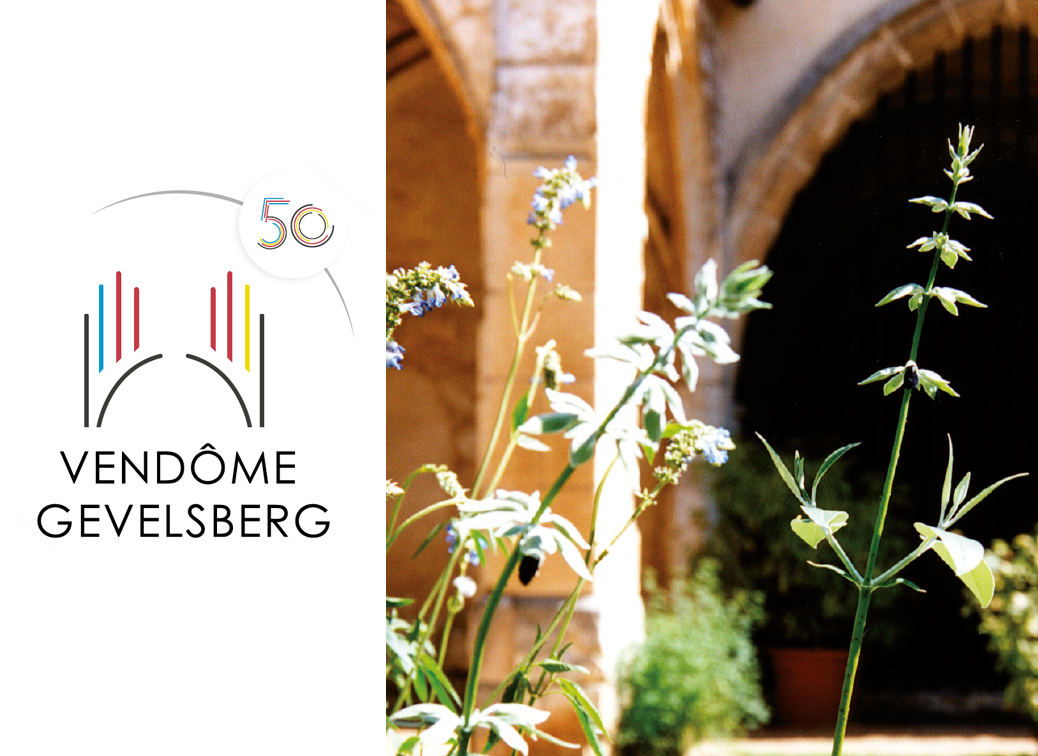Der Klosterhof
Zahlreiche botanische Arten (hier eine Salvia Discolore) entfalten sich im Garten der Düfte des Klosterhofs.
Der Kreuzgang, der Meditation der Mönche vorbehalten, ist ein Teil des Klosters (Latein claustrum, Umzäunung). Er befindet sich im Herzen der Benediktinerabtei. Das Kloster umfasst den Schlafraum und den Speisesaal der Mönche sowie die Gästeunterkunft. Die kreisförmige Küche (wie in Fontevraud) und der Südflügel machen einem noch größeren Gebäude Platz, um im 18. Jahrhundert die mauritischen Benediktinermönche aufzunehmen. Nur der Nordteil der Kreuzgangsgalerie steht heute noch der Kirche entlang. Im Jahre 1907 werden auf Anweisung des Militärs die drei anderen Seiten abgerissen.
Im Kapitelsaal versammeln sich die Mönche jeden Tag. Eine Wand des Saals ist mit sehr schönen Fresken verziert (Ende 11., Anfang 12. Jahrhundert), die 1972 hinter einer Mauer aus dem 14. Jahrhundert entdeckt wurden. “Der wunderbare Fischfang” (Johannes 21, 1-14) ist die schönste unter den Szenen, die die Ereignisse nach der “Aufer-stehung Christi” darstellen.
The cloister garth
The cloister (from the Latin “claustrum”: enclosure) was an area reserved for meditation by the monks. It was central to the operation of the Benedictine abbey and round it are the dorter, refectory and guests’ rooms. The circular kitchen (like the one in Fontevraud) and the South Wing were replaced by a more impressive building which was needed by the Benedictine monks of the Order of St. Maur in the 18th century. Only the north section of the cloister gallery beside the church survived the demolition decided upon by the Army in 1907.
The chapter house was used by the monks for daily meetings. One of the walls in the room is decorated with particularly beautiful frescoes (late 11th/early 12th centuries) which were discovered in 1972 behind a 14th-century wall. The “Miraculous Catch of Fish” (John 21,vv. 1-14) remains the most beautiful of the scenes illustrating the events that occurred after Christ’s Resurrection.
La cour du Cloître
Le cloître (du latin “claustrum” : clôture) est un espace réservé à la méditation des moines. Il est au cœur du fonctionnement de cette abbaye bénédictine et comprend : le dortoir, le réfectoire et le logis des hôtes. La cuisine circulaire (comme à Fontevraud) et l’aile sud ont été remplacées par un bâtiment plus imposant, nécessaire à l’accueil des moines bénédictins mauristes au XVIIIe siècle. Seule la partie nord de la galerie du cloître, le long de l’église, a survécu à la démolition décidée par l’armée en 1907.
La salle capitulaire est le lieu de réunion quotidien des moines. Un des murs de la salle est orné de très belles fresques (fin XIe début XIIe siècles) découvertes en 1972 derrière un mur du XIVe siècle. “La Pêche miraculeuse” (Jean 21, 1-14) demeure la plus belle de ces scènes illustrant des événements survenus après “La Résurrection du Christ”.


